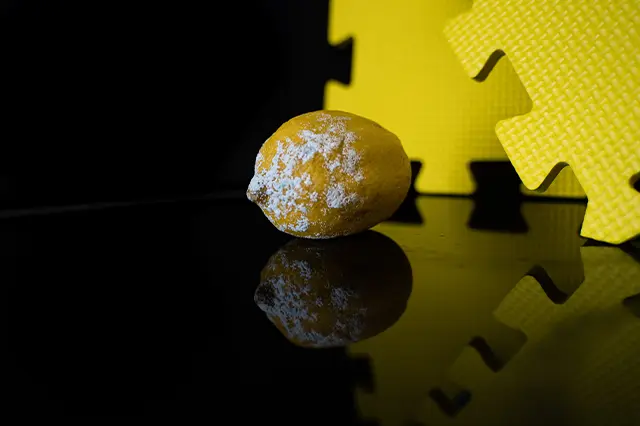Cleaning Mold: How To Do It Safely And Effectively
Mold can cause a lot of problems. Not only is it a health hazard, but it can also cause financial losses if it’s not cleaned up quickly. In this post, we will provide you with tips on how to clean mold safely and effectively. We will also discuss some methods that can be used to determine the extent of mold damage. By reading this post, you will be able to take steps to protect yourself and your property from mold contamination.
What Is Mold?
Mold is a common and all too often overlooked problem in homes. It can grow on any surface, including drywall, plaster, insulation, and even the floors. Mold can cause serious health problems if it’s inhaled or ingested. Cleaning mold requires caution and proper protection.
How Does Mold Cause Damage?
Mold is a fungus that lives in moist environments, such as wet ceilings, walls, or floors. It produces allergens and toxins that can cause health problems if breathed in or ingested. Mold can also produce black mold, which is the most dangerous type of mold and can cause respiratory problems, neurological problems, and even death.
To clean mold:
1. Remove any visible debris with a vacuum cleaner and a brush.
2. Pour white vinegar (5% to 10%) on the area to be cleaned, wait five minutes, then vacuum up the vinegar.
3. Rinse the area with cold water to cool down the vinegar. Remove any excess water with a cloth or sponge.
4. Apply a fungicide (such as our proactive formula) to the contaminated surface and allow it to work for at least one hour before cleaning again.
5. Clean the area with a professional cleaner.
Remember:
Do not use household cleaners on mold! They can create a dangerous situation. If you think you may have a mold problem, contact your local health department.
The Different Types of Molds
There are many different types of mold, each with its own specific cleaning requirements. This article will outline the most common types of mold and their specific cleaning requirements.
Mold can be found in a variety of places, including homes, schools, offices, hospitals, and restaurants. It is often brought in on contaminated items such as clothing or furniture. Mold can also grow on its own if the right conditions are present.
The most common type of mold is called Aspergillus fumigatus which is commonly found on bread and other foods that have been stored at an improper temperature. A second type of mold called Penicillium notatum often grows on paper products and animal fur.
To clean mold effectively, it is important to identify the type of mold and clean it accordingly. Some molds can be removed by hand while others require special tools or chemicals. Always wear gloves and protective eyewear when cleaning any kind of mold!
How to Clean Mold Safely and Effectively
Cleaning mold can be a daunting task, but it is important to remember that it can be done safely and effectively with the right tools and proper precautions. Here are some tips for cleaning mold safely and effectively:
1. Use a Mold Cleaner That Is Safe For Your Home:
To ensure that your cleaning efforts are safe and effective, it is important to use a mold cleaner that is specifically designed for use in your home. Make sure the cleaner you select is certified by the National Sanitation Foundation (NSF). NSF certification indicates that the product has been tested and found to be effective at removing mold from surfaces.
2. Wear Proper Protective Gear:
Wearing proper protective gear while cleaning mold will help avoid exposure to harmful spores and chemicals. Safety goggles, boots, gloves, and a face shield are all recommended precautions when tackling this job. If you do not have any of these items available, consider wearing a respirator.
3. Use Non-Toxic Cleaning Supplies:
It is important to use non-toxic cleaning supplies when cleaning mold as this will minimize the risk of exposure to hazardous chemicals. Some good choices for non-toxic cleaners include vinegar or baking soda mixed with water or club soda mixed with water. Do not use chlorine bleach or other harsh chemicals on mould; these chemicals can cause damage to your furniture and carpeting.
4. Let the Mold Cleaner Work Its Magic:
Once you have selected a mold cleaner and put on the appropriate protective gear, let the cleaner work its magic. Follow the directions on the product label carefully to ensure safe and effective cleaning.
Cleaning mold can be a daunting task, but with the right precautions and the help of a safe and effective mold cleaner, it can be done safely and effectively.
How Often Should You Clean Mold?
Mold can be a serious health hazard, so it’s important to clean it up as soon as possible. Acids and bleach are great tools for cleaning mold, but they’re also dangerous if used incorrectly. Here are tips for cleaning mold safely and effectively:
1. Make sure you have the right supplies. You’ll need a bucket of water, some soap, and a brush.
2. Test the acid or bleach solution first on an inconspicuous spot to make sure it doesn’t damage anything.
3. Pour the solution into the bucket and add enough water to cover the mold.
4. Soak the mold in the solution for several minutes, then scrub it with the brush. Use a stiff brush if necessary to get into tight spots.
5. Rinse off the mold with water, then dry it off completely before storing or using the space again.
6. If the mold is large or difficult to remove, you may need to call a professional.
What to Do if You Can’t Remove Mold Quickly
If you can’t remove mold quickly, follow these steps:
1. Remove all flammable materials, such as furniture and curtains.
2. Cover the mold with a layer of plastic wrap.
3. Put on a protective suit, including a face mask and gloves.
4. Open the windows and allow the room to air out for several hours.
5. Pour a pot of hot water over the mold, using a hose to spray it from all directions. Then pour a pot of cold water over it to cool the mold down.
6. scraping or cutting off all visible mold with a knife or spoon; wearing safety goggles and breathing through a dust mask if needed. Discarding contaminated material in accordance with local regulations.
7. Clean the area with a disinfectant, such as bleach or ammonia, and dry it completely.
8. Replace any damaged furniture or drywall, and put the room back in service.
9. Clean any surfaces that have come in contact with the mold, using a disinfectant and dry cloth.
10. Throw out any food or items that may have been exposed to the mold.
Conclusion
Mold can be a harmful and frustrating problem to deal with, but there are ways to clean it safely and effectively. By following these guidelines, you can avoid any potential health hazards while cleaning your home or office. Safe mold removal doesn’t have to be difficult – follow these simple tips and you will be on your way to a healthy and Mold-free home in no time!

